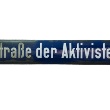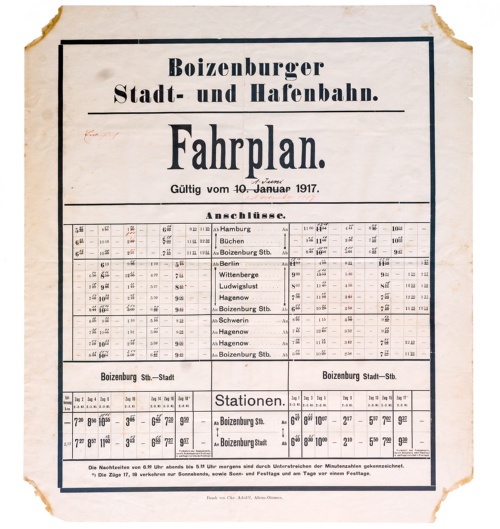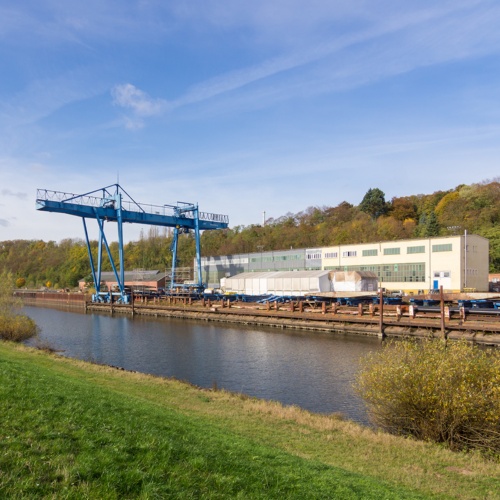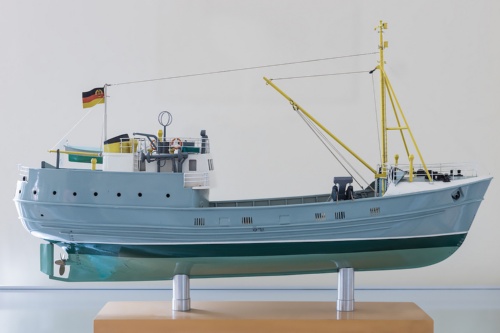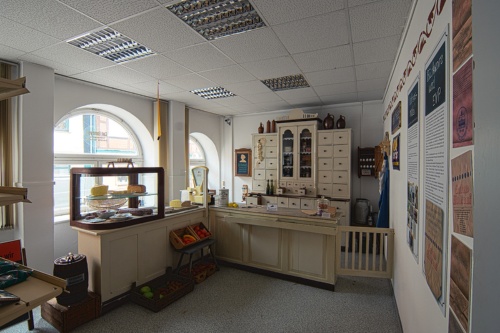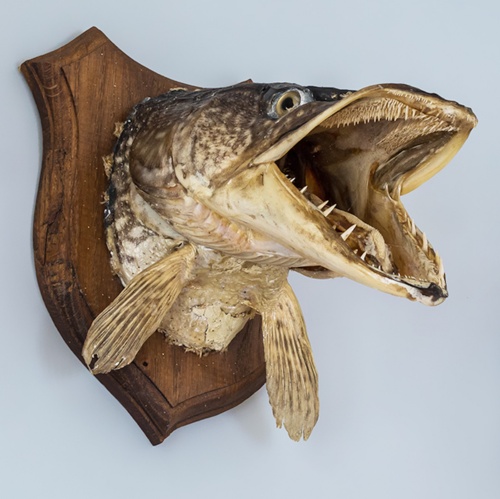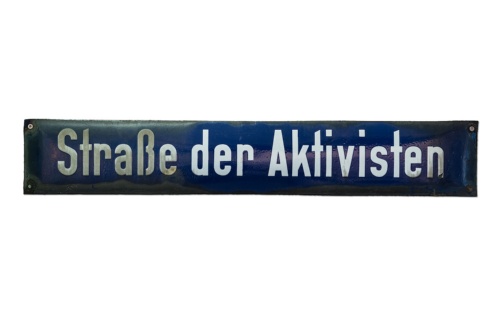Road sign "Street of Activists"
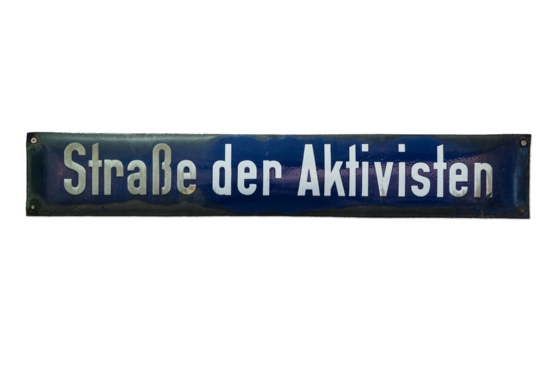
- Sheet metal
- after 1945 to 1991
- 89.5 cm x 15 cm
- today: Friedrich-Jacob-Klepper-Strasse
The first Boizenburg street names are based on field names. Later, streets are also named after local trees, buildings or nearby destinations outside the town. Other names recall literary figures, historical or political persons, and these names are changed several times after political turning points.
The streets in suburban housing estate from the 1930s, popularly known as "Auf der Siedlung" ("On the Housing Estate"), are first named after National Socialists and "heroes" of the First World War. These names are changed after the end of the Second World War – as is "Richthofenstrasse". It is now called "3. Gasse" ("3rd Street") and finally "Strasse der Aktivisten" ("Street of the Activists"). This expresses the demarcation of the "workers' and peasants' state" of the GDR from the Federal Republic of Germany, in a place which, until 1972, was located in the 5 km restricted area and whose historical roads lead to the other side of the inner-German border.
After German reunification in October 1990, the "Street of Activists" does not last long: it is now named after the Lüneburg wine merchant Friedrich-Jacob-Klepper (1779-1871), a famous Boizenburg resident who once fought against Napoleon.
Text: I.R.
